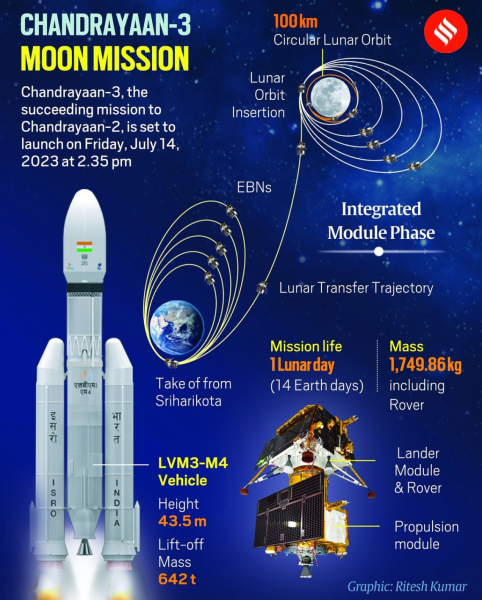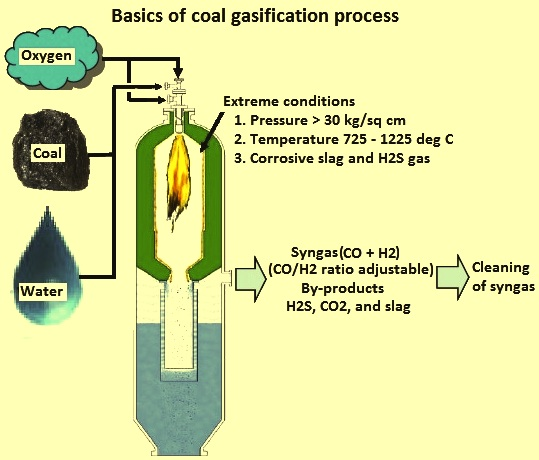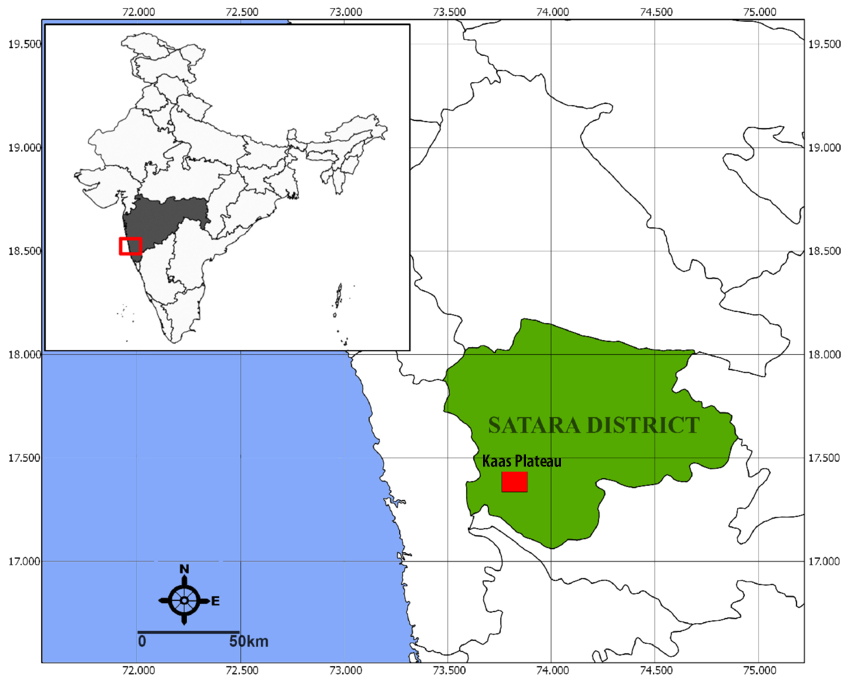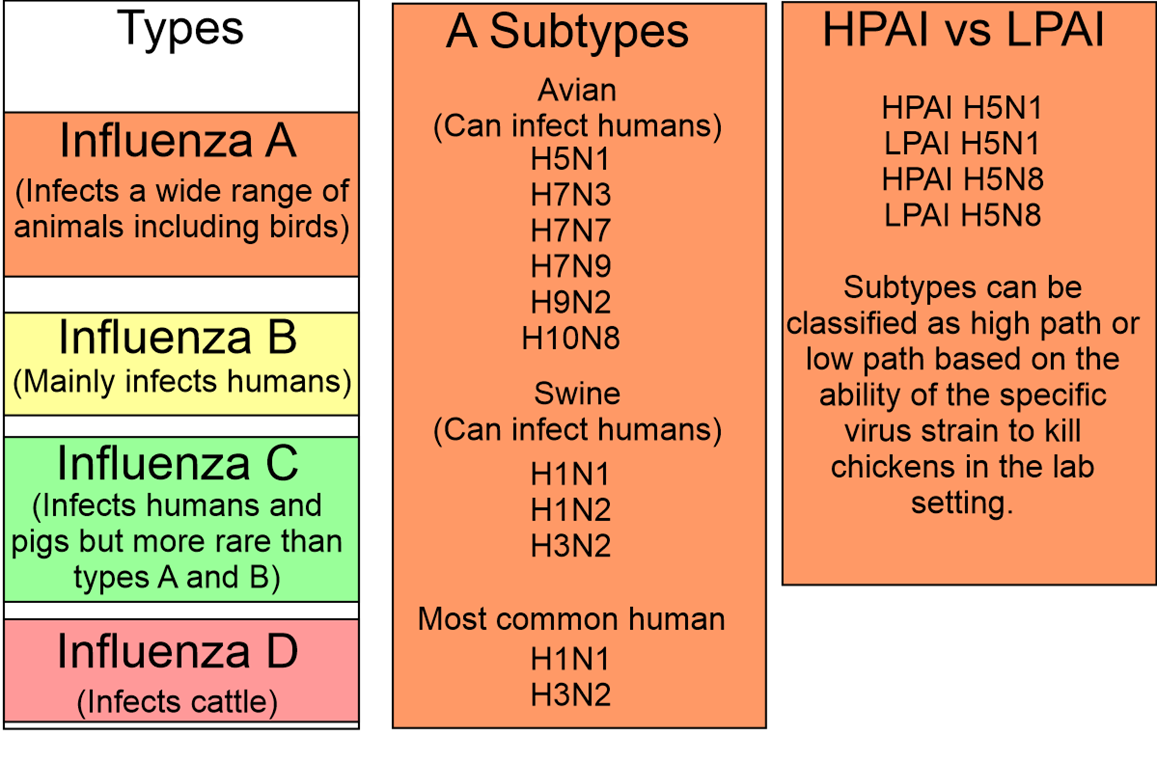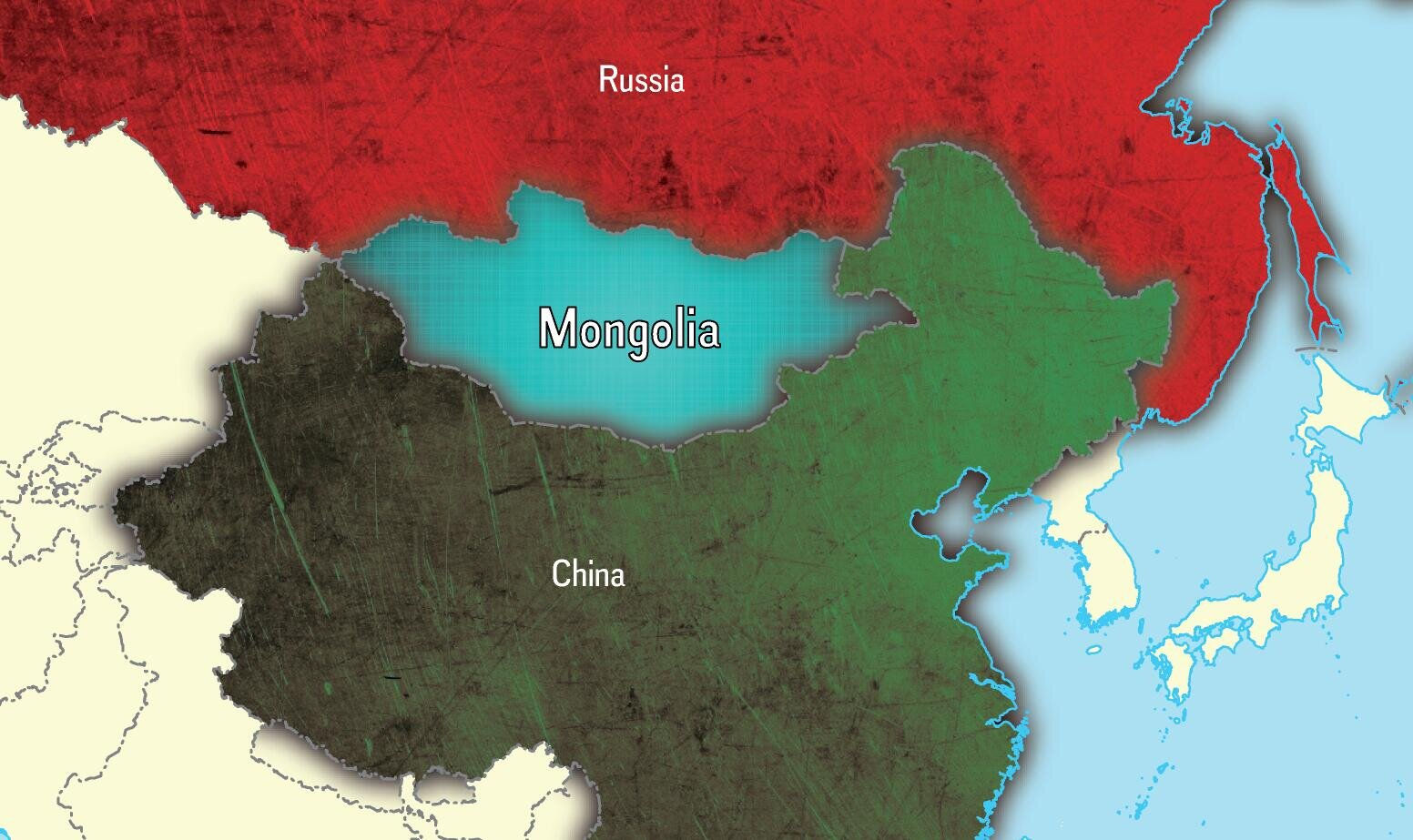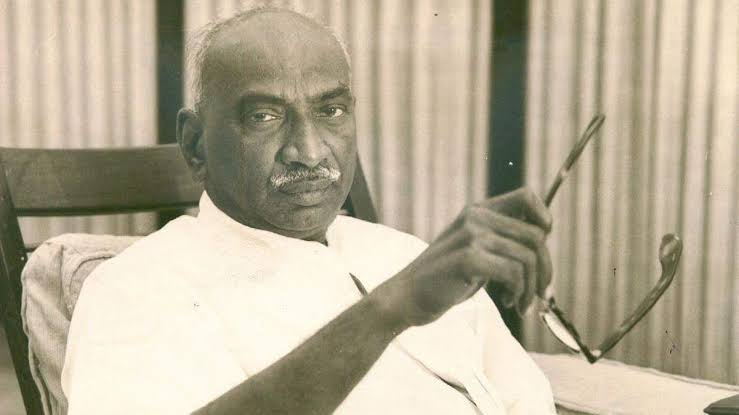Science & Technology
Chandrayaan-3
For Prelims: Chandrayaan-3, Spectro-polarimetry of Habitable Planet Earth, Satish Dhawan Space Center, Elliptic Parking Orbit, LVM3 M4, Flybys, Orbiters, Impact Missions, NASA's Artemis Program
For Mains: Space Technology, Chandrayaan 3 Mission and its Significance
Why in News?
With the launch of Chandrayaan-3, the Indian Space Research Organisation (ISRO) is embarking to achieve a successful soft landing on the moon.
- India aims to become the fourth country in the world to achieve this feat, joining the ranks of the United States, Russia, and China.
What is Chandrayaan-3 Mission?
- About:
- Chandrayaan-3 is India's third lunar mission and second attempt at achieving a soft landing on the moon's surface.
- The mission took off from the Satish Dhawan Space Center (SDSC) in Sriharikota on July 14, 2023, at 2:35 pm.
- It consists of an indigenous Lander module (LM), Propulsion module (PM) and a Rover with an objective of developing and demonstrating new technologies required for Inter planetary missions.
- Mission Objectives of Chandrayaan-3:
- To demonstrate Safe and Soft Landing on Lunar Surface
- To demonstrate Rover roving on the moon and
- To conduct in-situ scientific experiments.
- Features:
- The six payloads on the Vikram lander and rover Pragyan remain the same as the Chandrayaan-2 mission.
- The scientific payloads on the lander aim to study various aspects of the lunar environment. These payloads include studying lunar quakes, thermal properties of the lunar surface, changes in plasma near the surface, and accurately measuring the distance between Earth and the moon.
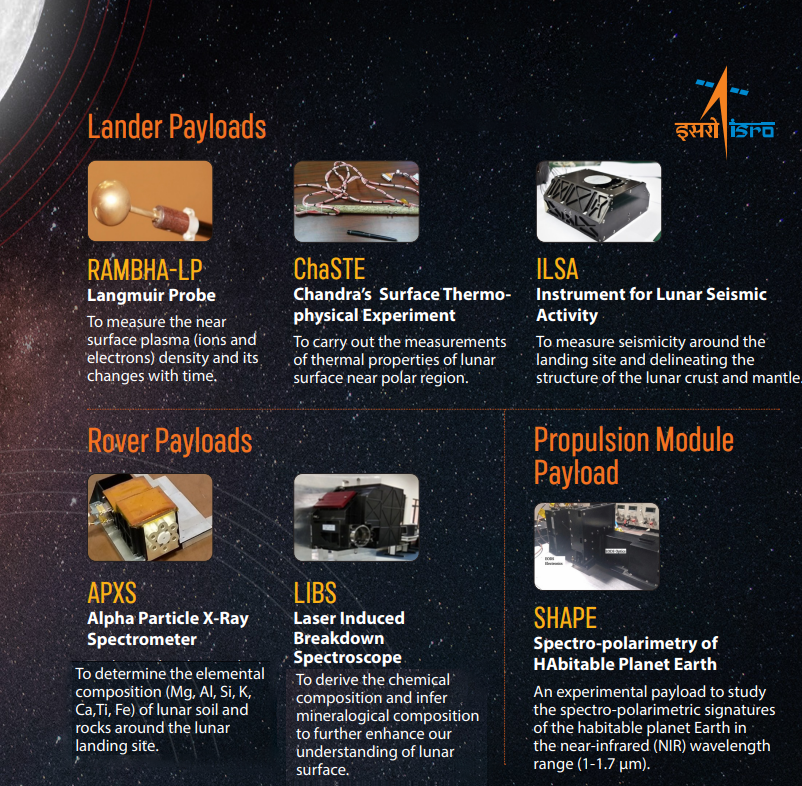
- The propulsion module of Chandrayaan-3 features a new experiment called Spectro-polarimetry of Habitable Planet Earth (SHAPE).
- SHAPE aims to search for smaller planets with potential habitability by analyzing reflected light.
- The six payloads on the Vikram lander and rover Pragyan remain the same as the Chandrayaan-2 mission.
- Changes and Improvements in Chandrayaan-3:
- The landing area has been expanded, providing flexibility to land safely within a larger designated area.
- The lander has been equipped with more fuel to enable longer-distance travel to the landing site or alternate locations.
- The Chandrayaan-3 Lander has solar panels on four sides, instead of only two in Chandrayaan-2.
- High-resolution images from the Chandrayaan-2 orbiter are used to determine the landing location, and physical modifications have been made to enhance stability and sturdiness.
- Additional navigational and guidance instruments are on board Chandrayaan-3 to continuously monitor the Lander’s speed and make the necessary corrections.
- This includes an instrument called Laser Doppler Velocimeter, which will fire laser beams to the lunar surface to calculate the Lander’s speed.
- Launch and Timeline:
- The LVM3 M4 launcher has been successfully utilized to launch Chandrayaan-3
- Around 16 minutes after the LVM-3 lifted off, the spacecraft separated from the rocket. It entered into an elliptic parking orbit (EPO).
- Chandrayaan-3's journey is estimated to take approximately 42 days, with a landing scheduled for August 23, 2023 at the lunar dawn.
- The lander and the rover will have a mission life of one lunar day (about 14 Earth days) as they work on solar energy.
- The landing site for Chandrayaan-3 is near the lunar south pole.
- The LVM3 M4 launcher has been successfully utilized to launch Chandrayaan-3
What is the Importance of Landing Near the Lunar South Pole?
- Historically, spacecraft missions to the Moon have primarily targeted the equatorial region due to its favorable terrain and operating conditions.
- However, the lunar south pole presents a vastly different and more challenging terrain compared to the equatorial region.
- Sunlight is scarce in certain polar regions, resulting in perpetually dark areas where temperatures can reach to -230 degrees Celsius.
- This lack of sunlight and extreme cold pose difficulties for instrument operation and sustainability.
- The lunar south pole offers extreme and contrasting conditions that pose challenges for humans but it make them potential repositories of valuable information about the early Solar System.
- It is crucial to explore this region which could impact future deep space exploration.
What is India’s Other Chandrayaan Missions?
- Chandrayaan-1:
- India's lunar exploration missions began with Chandrayaan-1 in 2008, which aimed to create a three-dimensional atlas of the moon and conduct mineralogical mapping.
- Launch Vehicle: PSLV – C11.
- Chandrayaan-1 made significant discoveries, including the detection of water and hydroxyl on the lunar surface.
- India's lunar exploration missions began with Chandrayaan-1 in 2008, which aimed to create a three-dimensional atlas of the moon and conduct mineralogical mapping.
- Chandrayaan-2: Partial Success and Discoveries:
- Chandrayaan-2 consisted of an Orbiter, Lander, and Rover, with the goal of exploring the lunar south pole.
- Launch Vehicle: GSLV MkIII-M1
- Although the lander and rover crashed on the moon's surface, the Orbiter successfully collected data and found signatures of water at all latitudes.
- Chandrayaan-2 consisted of an Orbiter, Lander, and Rover, with the goal of exploring the lunar south pole.
Types of Moon Missions:
- Flybys: These missions involve spacecraft passing near the moon without entering its orbit, allowing for observations from a distance.
- Examples include Pioneer 3 and 4 by the United States and Luna 3 by the USSR.
- Orbiters: These spacecraft enter lunar orbit to conduct prolonged studies of the moon's surface and atmosphere.
- Chandrayaan-1 and 46 other missions have utilized orbiters.
- Impact Missions: Extensions of orbiter missions, impact missions involve instruments making an uncontrolled landing on the lunar surface, providing valuable data before being destroyed.
- Chandrayaan-1's Moon Impact Probe (MIP) followed this approach.
- Landers: These missions aim for a soft landing on the moon's surface, allowing for close-quarter observations.
- Luna 9 by the USSR was the first successful landing on the moon in 1966.
- Rovers: Rovers are specialized payloads that detach from landers and move independently on the lunar surface.
- They gather valuable data and overcome the limitations of stationary landers. Chandrayaan-2's rover was called Pragyan( same name is retained for Chandrayaan-3 as well).
- Human Missions: These missions involve the landing of astronauts on the moon's surface.
- Only NASA has achieved this feat, with six successful landings between 1969 and 1972.
- NASA's Artemis III, planned for 2025, will mark humanity's return to the moon.
UPSC Civil Services Examination, Previous Year Question (PYQ)
Q. Discuss India’s achievements in the field of Space Science and Technology. How the application of this technology has helped India in its socio-economic development? (2016)


Governance
Ensuring Child Welfare and Support: Mission Vatsalya Scheme
For Prelims: Mission Vatsalya, Ministry of women and child development, Integrated Child Protection Scheme
For Mains: Mission Vatsalya, Government Policies & Interventions, Issues Related to Children
Why in News?
Mission Vatsalya, launched by the Ministry of Women and Child Development, ensures children's safety and security in India.
- Child Welfare and Protection Committee (CW&PC) at village level will identify the children who are eligible for support likely to be in difficult circumstances, orphans, street children etc. These children will be facilitated under the sponsorship component of Mission Vatsalya Scheme.
- Sponsorship facilities will be provided based on the recommendation of the Child Welfare Committee (CWC) and approval from the Sponsorship and Foster Care Approval Committee (SFCAC).
What is Mission Vatsalya?
- Historical Perspective:
- Pre-2009: Ministry of Women and Child Development implemented three schemes:
- Juvenile justice program for children in need of care and protection and children in conflict with the law.
- Integrated program for street children.
- Scheme for assistance to children's homes.
- 2010: These schemes merged into the Integrated Child Protection Scheme.
- 2017: Renamed as the Child Protection Services Scheme.
- 2021-22: Reintroduced as Mission Vatsalya.
- Pre-2009: Ministry of Women and Child Development implemented three schemes:
- About:
- Umbrella scheme for child protection services in India.
- Aims to secure a healthy and happy childhood for every child in the country.
- Components of Mission Vatsalya include:
- Improving the functioning of statutory bodies.
- Strengthening service delivery structures.
- Upscaling institutional care and services.
- Encouraging non-institutional community-based care.
- Providing emergency outreach services.
- Training and capacity building.
- Objectives:
- Ensure opportunities for children to reach their full potential and flourish in all aspects.
- Foster a sensitive, supportive, and synchronized ecosystem for child development.
- Assist states and union territories in implementing the Juvenile Justice Act, of 2015.
- Achieve the Sustainable Development Goals (SDGs).
- Modes of Non-Institutional Care for Children:
- Sponsorship:
- Government Aided Sponsorship: Financial assistance provided through government funds.
- Private Aided Sponsorship: Financial assistance provided through private sources or individuals.
- Foster Care:
- The responsibility of caring and rehabilitating the child is undertaken by an unrelated family.
- Financial support is provided to the foster parents for nurturing the child.
- Adoption:
- Finding suitable families for children who are legally free for adoption.
- The Central Adoption Resource Authority (CARA) facilitates the adoption process.
- Aftercare:
- Financial support is provided to children leaving a Child Care Institution upon turning 18 years old.
- This support helps them reintegrate into society and become self-dependent.
- Assistance may be extended from the age of 18 years up to 21 years, with the possibility of extension up to 23 years.
- Sponsorship:
Note: Every district will have a SFCAC to implement and monitor the Sponsorship and Foster Care programme as provided under the Mission.
What are Child Welfare Committees?
- Child Welfare Committees (CWCs) are constituted by state governments for each district or group of districts to protect and care for children in need.
- Each CWC consists of a Chairperson and four members, including at least one woman and one expert on matters concerning children.
- The Juvenile Justice (Care and Protection of Children) Act, 2015, mandates the establishment of at least one CWC in every district.
- CWCs perform functions and roles as defined in the Juvenile Justice Act/Rules, subject to amendments.
- CWC functions as a Bench of Magistrates and has the authority to dispose of cases related to the care, protection, treatment, development, and rehabilitation of children.
- Mission Vatsalya provides infrastructure and financial support to states/UTs for setting up and ensuring the effective functioning of CWCs.


Social Justice
Diabetes Mellitus and Tuberculosis
For Prelims: Diabetes Mellitus and Tuberculosis, Epidemics, Type 2 Diabetes, Tuberculosis, Respiratory Infections.
For Mains: Diabetes Mellitus and Tuberculosis.
Why in News?
For a very long time, India has been experiencing the burden of two severe Epidemics, Diabetes Mellitus (DM) and Tuberculosis (TB), however few know how deeply these diseases are interlinked.
- Currently, India has around 74.2 million people living with diabetes while TB affects 2.6 million Indians every year.
How Are DM and TB Interlinked?
- Risk of Developing Respiratory Infections:
- The DM increases the risk of developing respiratory infections. DM is a major risk factor that increases the incidence and severity of TB.
- Among people with TB, the prevalence of DM was found to be 25.3% while 24.5% were pre-diabetic, in a 2012 study in tuberculosis units in Chennai.
- DM Hampers the Recovery of TB:
- DM not only increases the risk of TB but also hampers the recovery process and prolongs the time for TB bacteria to be eliminated from the body.
- The impaired cell-mediated immunity in DM affects the body's ability to fight infections, including TB.
- Alters the Defense Mechanism:
- Uncontrolled DM alters the defense mechanisms in the lungs, making individuals more susceptible to TB infection.
- Additionally, the altered functions of small blood vessels in the lungs and poor nutritional status, common in DM, create an environment that facilitates the invasion and establishment of TB bacteria.
- Likelihood of Unfavorable TB Treatment Outcomes:
- DM increases the likelihood of unfavorable TB treatment outcomes, such as treatment failure, relapse/reinfection, and even death.
- The coexistence of TB and DM in patients may also modify TB symptoms, radiological findings, treatment, final outcomes, and prognosis.
- The dual burden of DM and TB not only impacts the health and survival of individuals but also places a significant burden on the healthcare system, families, and communities.
What can be done to Tackle Both DM and TB?
- Provide individualized care for TB and DM patients, integrating treatments and addressing comorbidities.
- Improve patient education, support, and nutrition to enhance TB treatment outcomes.
- Strengthen healthcare programs for TB and DM, build resilient and integrated health systems, and use research to inform evidence-based decision-making.
What is Diabetes Mellitus (DM)?
- About:
- DM is a disorder in which the body does not produce enough or respond normally to insulin, causing blood sugar (glucose) levels to be abnormally high.
- The name Diabetes Mellitus is often used rather than diabetes alone, to distinguish this disorder from Diabetes Insipidus.
- Diabetes insipidus is a relatively rare disorder that does not affect blood glucose levels but, just like diabetes mellitus, causes increased urination.
- While 70–110 mg/dL fasting blood glucose is considered normal, blood glucose levels between 100 and 125 mg/dL is considered prediabetes, and 126 mg/dL or higher is defined as diabetes.
- Types:
- Type 1 Diabetes:
- The body's immune system attacks the insulin-producing cells of the pancreas, and more than 90% of them are permanently destroyed.
- The pancreas, therefore, produces little or no insulin.
- Only about 5 to 10% of all people with diabetes have type 1 disease. Most people who have type 1 diabetes develop the disease before age 30, although it can develop later in life.
- Type 2 Diabetes:
- The pancreas often continues to produce insulin, sometimes even at higher-than-normal levels, especially early in the disease.
- However, the body develops resistance to the effects of insulin, so there is not enough insulin to meet the body’s needs. As type 2 diabetes progresses, the insulin-producing ability of the pancreas decreases.
- Type 2 diabetes was once rare in children and adolescents but has become more common. However, it usually begins in people older than 30 and becomes progressively more common with age.
- About 26% of people older than 65 have type 2 diabetes.
- Type 1 Diabetes:
What is Tuberculosis (TB)?
- Tuberculosis is an infectious disease that can cause infection in your lungs or other tissues.
- It commonly affects lungs, but it can also affect other organs like your spine, brain or kidneys.
- TB is caused by a bacterium called Mycobacterium tuberculosis. The bacteria usually attack the lungs, but TB bacteria can attack any part of the body such as the kidney, spine, and brain.
- The three stages of TB are:
- Primary infection.
- Latent TB infection.
- Active TB disease.


Biodiversity & Environment
Promoting Coal Gasification in India
For Prelims: Promoting Coal Gasification in India, Coal Gasification, Goods and Services Tax, Input Tax Credit, Syngas, Natural Gas.
For Mains: Promoting Coal Gasification in India.
Why in News?
The Ministry of Coal is considering a Comprehensive Scheme to promote Coal Gasification, aiming to achieve 100 Million Tonne (MT) coal Gasification by FY 2030.
- The Ministry is also considering an incentive to reimburse the Goods and Services Tax (GST) compensation cess on coal utilized in gasification projects for a period of 10 years after the commercial operational date (COD), provided that the GST compensation cess is extended beyond FY27. This incentive aims to offset the inability of entities to claim Input Tax Credit for the same.
What are the Key Points of the Scheme?
- About:
- The initiative incorporates a comprehensive set of measures that capitalize on natural resources and demonstrate financial and technical feasibility of Coal Gasification.
- It aims to attract Government PSUs and the Private Sector, fostering innovation, investment, and sustainable development in the coal gasification sector.
- Process:
- The selection of entities for the coal/lignite gasification scheme will be carried out through a competitive and transparent bidding process.
- The government will provide budgetary support to eligible Government PSUs, and Private sector enabling them to undertake coal gasification projects.
- Significance:
- This initiative holds the potential to alleviate the environmental burden by reducing carbon emissions and fostering sustainable practices, contributing to our global commitments towards a greener future.
What is Coal Gasification?
- About:
- Coal gasification is a process in which coal is partially oxidized with air, oxygen, steam or carbon dioxide to form a fuel gas.
- This gas is then used instead of piped Natural Gas, methane and others for deriving energy.
- In-situ gasification of coal – or Underground Coal Gasification (UCG) – is the technique of converting coal into gas while it is still in the seam and then extracting it through wells.
- Production of Syngas:
- It produces Syngas which is a mixture consisting primarily of methane (CH4), carbon monoxide (CO), hydrogen (H2), carbon dioxide (CO2) and water vapour (H2O).
- Syngas can be used to produce a wide range of Fertilizers, Fuels, solvents and synthetic materials.
- Significance:
- Steel companies can reduce costs by replacing expensive imported coking coal with syngas from coal gasification plants in their manufacturing process.
- It is primarily used for electricity generation, for the production of chemical feedstocks.
- The hydrogen obtained from coal gasification can be used for various purposes such as making ammonia and powering a hydrogen economy.
- Concerns:
- The syngas process converts a relatively high-quality energy source (coal) to a lower quality state (gas) and consumes a lot of energy in doing so. Thus, the efficiency of conversion is also low.
What is the Need for Promoting Coal Gasification Projects in India?
- The adoption of gasification technology in India can revolutionize the coal sector, reducing reliance on imports of Natural Gas, Methanol, Ammonia and other essential products.
- Currently, India imports approximately 50% of its Natural Gas, over 90% of its total Methanol consumption and around 13-15% of its total ammonia consumption to cater to the domestic demand.
- It can contribute to India's vision of becoming Aatmanirbhar and create a surge in employment opportunities.
- The implementation of coal gasification is expected to make significant contributions to the nation's development by reducing imports by 2030.
Way Forward
- The government should conduct a comprehensive evaluation of the environmental, economic, and social implications of coal gasification projects.
- Continued investment in research and development can drive advancements in coal gasification technology, making it more efficient and environmentally friendly.
- Emphasize the development of a diversified energy mix that includes renewable energy sources, energy efficiency measures, and sustainable alternatives to coal-based energy production.
- Learn from global experiences and best practices in coal gasification and hydrogen economy implementation to ensure sustainable development.


Science & Technology
Organic Matter on Mars
For Prelims: Perseverance rover, Jezero Crater, Meteorites, Multi-Mission Radioisotope Thermoelectric Generator , Mars Phoenix Lander, Curiosity Rover, Mangalyaan (2013)
For Mains: NASA’s Mars 2020 mission, Scanning Habitable Environments with Raman and Luminescence for Organics and Chemicals (SHERLOC),
Why in News?
The United States National Aeronautics and Space Administration's (NASA) Perseverance rover has uncovered evidence of organic compounds in a Martian crater.
- The rover's landing site in Jezero Crater shows a high possibility for past habitability. The presence of various minerals, including carbonates, clays, and sulphates, indicates its history as an ancient lake basin.
What are Organic Compounds?
- Organic compounds are molecules that primarily contain carbon and hydrogen, and often other elements such as oxygen, nitrogen, phosphorus and sulfur.
- They are the key building blocks of life on Earth, as they form the basis of proteins, nucleic acids, carbohydrates, lipids and other biomolecules.
- They can also be produced by non-biological processes, such as volcanic activity, meteorite impacts, lightning strikes and cosmic radiation.
What are the Major Findings Related to Presence of Organic Matter in Mars?
- Earlier missions had already identified organic chemicals with Martian origin in meteorites and the Gale Crater.
- Only the Mars Phoenix lander and the Curiosity rover had previously detected organic carbon on Mars using advanced techniques such as evolved gas analysis and gas chromatography-mass spectrometry.
- The latest research through Perseverance Rover introduces a novel instrument, the Scanning Habitable Environments with Raman and Luminescence for Organics and Chemicals (SHERLOC) instrument, which helps locate basic chemical compounds on Mars.
- It reveals that Mars possesses a more intricate organic geochemical cycle.
- Multiple reservoirs of potential organic molecules are suggested to exist on the planet, expanding the possibilities for habitability.
- The study also found molecules associated with aqueous processes, indicating that water may have played a significant role in Mars's range of organic matter.
- It reveals that Mars possesses a more intricate organic geochemical cycle.
- The extended presence of key building blocks necessary for life implies that Mars may have been habitable for longer periods than previously assumed.
Note:
- SHERLOC is the first instrument on Mars that can perform fine-scale mapping and analysis of organic molecules.
- It uses a laser to illuminate the surface of rocks and soils, and measures the fluorescence or glow emitted by organic compounds when exposed to ultraviolet light.
- SHERLOC can also identify the minerals associated with organic compounds, which can provide clues about their origin and preservation.
What is the Perseverance Rover?
- About: Perseverance is a car-sized Mars rover designed to explore the Jezero crater on Mars as part of NASA’s Mars 2020 mission.
- It was manufactured by the Jet Propulsion Laboratory and launched on July 30, 2020.
- It landed on Mars on February 18, 2021, after a seven-month journey.
- Power Source: A Multi-Mission Radioisotope Thermoelectric Generator (MMRTG) which converts heat from the natural radioactive decay of plutonium (Plutonium Dioxide) into electricity.
- Major Objectives:
- Seek signs of ancient life and collect samples of rock and soil for possible return to Earth.
- Study the geology and climate of Mars and how they have changed over time.
- Demonstrate technologies that could enable future human exploration of Mars, such as producing oxygen from the Martian atmosphere and testing a miniature helicopter.
What are the Various Mars Missions?
- India’s Mars Orbiter Mission (MOM) or Mangalyaan (2013)
- ExoMars rover (2021) (European Space Agency)
- Tianwen-1: China's Mars Mission (2021)
- UAE’s Hope Mars Mission (UAE’s first-ever interplanetary mission) (2021)
- Mars 2 and Mars 3 (1971) (Soviet Union)
Q. Consider the following statements: (2016)
The Mangalyaan launched by ISRO
- is also called the Mars Orbiter Mission
- made India the second country to have a spacecraft orbit the Mars after USA
- made India the only country to be successful in making its spacecraft orbit the Mars in its very first attempt
Which of the statements given above is/are correct?
(a) 1 only
(b) 2 and 3 only
(c) 1 and 3 only
(d) 1, 2 and 3
Ans: (c)
Biodiversity & Environment
Climate Change Alters Ocean Colour
For Prelims: Climate Change, Marine Ecosystem, Global Warming
For Mains: India's climate change mitigation initiatives, climate change impact on oceans
Why in News?
Recently, a new study reveals that 56% of the world's oceans have experienced a change in colour due to climate change.
- Tropical waters, particularly the southern Indian Ocean, have turned green, indicating an increase in phytoplankton and marine life.
What are the Key Highlights of the Study?
- Long-Term Trends and Data Analysis:
- Aqua Satellite Data:
- Researchers analyzed data from the Moderate Resolution Imaging Spectroradiometer (MODIS) on the Aqua satellite (NASA’s Earth Science satellite mission), monitoring ocean colour for two decades (2002-2022).
- MODIS takes measurements in seven visible wavelengths (Light of different wavelengths produces different perceptions of colour).
- Subtle Colour Changes:
- Human eyes cannot detect subtle colour changes in the oceans, which may contain a mix of wavelengths ranging from blue to green and even red.
- Green Waters and Phytoplankton:
- The study finds that green-coloured water indicates the presence of phytoplankton, essential microscopic plant-like organisms.
- Phytoplankton serve as the base of the marine food web, similar to plants on land, and play a crucial role in supporting marine life.
- The colour of the ocean affects the amount of carbon dioxide absorbed by the oceans, with current estimates indicating that oceans absorb 25% of global CO2 emissions.
- The study finds that green-coloured water indicates the presence of phytoplankton, essential microscopic plant-like organisms.
- Role of Climate Change:
- By comparing annual variations in ocean colour over the two decades, the study identified climate change as the primary factor behind the observed changes.
- Using a model, researchers simulated two scenarios—one considering greenhouse gas emissions and the other without them.
- The scenario accounting for greenhouse gas emissions predicted that colour changes could occur in approximately 50% of the world's surface oceans, aligning with satellite observations indicating a 56% shift to green or blue waters.
- Implications for Marine Life and Conservation:
- Impact on Organisms:
- The green hue comes from chlorophyll, a pigment that helps phytoplankton make food. A change in colour due to an increase or decline in the population will impact organisms that feed on plankton.
- Carbon Sequestration:
- Different types of plankton have varying abilities to absorb carbon, potentially influencing the ocean's capacity for carbon uptake.
- Impact on Organisms:
- Regional Variability and the Need for Further Study:
- The southern Indian Ocean exhibits significant changes in colour, while waters near India do not follow the same trend, potentially due to natural variability.
- Aqua Satellite Data:
- Recommendations:
- Researchers emphasize the need for individuals and policymakers to recognize the significance of these changes and take appropriate action to protect marine ecosystems.
- Ongoing monitoring and further research are crucial to understanding regional variations and the full extent of climate change's impact on ocean colour.
What are India's Climate Change Mitigation Initiatives?
- National Action Plan on Climate Change (NAPCC):
- Launched in 2008 to address climate change challenges in India.
- Aims to achieve low-carbon and climate-resilient development for India.
- There are 8 national missions forming the core of the NAPCC which represent multi-pronged, long term and integrated strategies for achieving key goals in climate change. These are-
- National Solar Mission
- National Mission for Enhanced Energy Efficiency
- National Mission on Sustainable Habitat
- National Water Mission
- National Mission for Sustaining the Himalayan Ecosystem
- National Mission for A Green India
- National Mission for Sustainable Agriculture
- National
- Mission on Strategic Knowledge for Climate Change.
- Nationally Determined Contributions (NDC)
- National Adaptation Fund on Climate Change (NAFCC):
- State Action Plan on Climate Change (SAPCC).
- Nationally Determined Contributions (NDC):
- India's commitments to reduce greenhouse gas emissions and adapt to climate change.
- Pledged to reduce the emissions intensity of GDP by 45% by 2030 from 2005 levels and generate 50% of electricity from non-fossil fuel sources by 2030.
- Pledged to create additional carbon sink and achieve net zero emissions by 2070.
- National Adaptation Fund on Climate Change (NAFCC):
- Established in 2015 to provide financial assistance to state governments for implementing adaptation projects in various sectors.
- State Action Plan on Climate Change (SAPCC):
- Encourages all states and union territories to prepare their own SAPCCs based on their specific needs and priorities.
- SAPCCs outline strategies and actions for addressing climate change at the sub-national level.
- Aligned with the objectives of the NAPCC and the NDC.
UPSC Civil Services Examination, Previous Year Questions (PYQs)
Q. What are the consequences of spreading ‘Dead Zones’ on marine ecosystems? (2018)


Biodiversity & Environment
Climate Shifts in Kaas Plateau
For Prelims: Climate Shifts in Kaas Plateau, Holocene Epoch, Southwest Monsoon, National Centre for Earth Sciences, United Nations Educational, Scientific and Cultural Organization (UNESCO) World Heritage.
For Mains: Climate Shifts in Kaas Plateau.
Why in News?
A recent study conducted by the Agharkar Research Institute (ARI) and the National Centre for Earth Sciences has shed light on significant climate shifts in the Kaas Plateau during the Early-Mid-Holocene and late Holocene Periods.
- The researchers studied the sediments of a seasonal lake to understand and decipher the past climate of the Kaas Plateau.
What is Kaas Plateau?
- The Kaas Plateau, located in Maharashtra's Satara district, is a UNESCO World Natural Heritage Site and a designated biodiversity hotspot.
- Known as Kaas Pathar in Marathi, its name is derived from the Kaasa tree, botanically known as Elaeocarpus glandulosus (rudraksha family).
- The plateau have various seasonal flowers forming a floral carpet over the entire lateritic crust during August and September.
What are the Key Findings of the Study?
- Ancient Lake and Environmental Preservation:
- The present "Flower Wonder" of the Kaas Plateau is located on an ancient lake that dates back to the Early-Mid-Holocene period, approximately 8000 years ago.
- The seasonal lake has been preserved over a long time and provided valuable insights into the past climate of the region.
- Climate Shifts during the Early-Mid-Holocene:
- Around 8664 years ago, there was a change in the climate from freshwater to drier conditions with low rainfall.
- Pollen and diatom data indicated a major shift in the Indian summer monsoon activity during this time.
- Despite the drier conditions, there were intermittent humid periods suggested by a significant rise in the number of diatoms.
- Late Holocene Climate Changes:
- During the late Holocene, approximately 2827 years ago, there was a decrease in rainfall and a weakened Southwest Monsoon.
- Recent Environmental Impact:
- Over the last 1000 years, there is evidence of lake Eutrophication, indicated by the presence of high numbers of planktonic and pollution-tolerant diatom taxa.
- Eutrophication is the process of a water body becoming overly enriched with minerals and nutrients which induces excessive growth of algae or algal bloom, thereby, leading to oxygen depletion of the water body.
- Human activities, including agriculture and cattle/livestock farming in the catchment area, likely contributed to this environmental impact.
- Over the last 1000 years, there is evidence of lake Eutrophication, indicated by the presence of high numbers of planktonic and pollution-tolerant diatom taxa.
- Monsoon Intensity and Duration:
- The southwest monsoon intensified during the Early Holocene, around 8000 years ago.
- The northeast monsoon relatively weakened around 2000 years ago.
- It is likely that the 'Flower Wonder' of the Kaas Plateau existed for a longer duration, up to March-April, during the early–mid-Holocene (8000–5000 years), when the monsoon rainfall was more abundant, with more than 100 rainy days.


Important Facts For Prelims
Bird Flu Outbreaks in Mammals
Why in News?
The recent surge in bird flu outbreaks among mammals has alarmed international agencies, including the Food and Agriculture Organization (FAO), the World Health Organization (WHO), and the World Organisation for Animal Health(WOAH, founded as OIE).
- The agencies express concern that as mammals are biologically closer to humans than birds, the virus could potentially adapt to infect humans more easily.
What is Bird Flu?
- About:
- Bird flu or Avian influenza refers to the disease caused by infection with avian influenza Type A viruses.
- Infrequently, the virus can infect mammals from birds, a phenomenon called spillover, and rarely can spread between mammals.
- Outbreak in Wild Birds and Poultry:
- The most common type of bird flu virus is H5N1, which belongs to the goose/Guangdong-lineage of H5N1 avian influenza viruses that first emerged in 1996/1997.
- Since 2020, this virus has caused an unprecedented number of deaths in wild birds and poultry in many countries in Africa, Asia, Europe and the Americas.
- In 2022, WOAH reported H5N1 high pathogenicity avian influenza outbreaks in poultry and wild birds in 67 countries across five continents.
- These outbreaks resulted in the loss of over 131 million domestic poultry due to death or culling in affected farms and villages.
- An additional 14 countries have reported outbreaks in 2023.
- Outbreaks in Mammals and Potential Hazard for Humans:
- Since 2022, approximately 10 countries have reported cases of avian flu outbreaks in both land and sea mammals.
- Examples include farmed mink in Spain, seals in the United States, and sea lions in Peru and Chile.
- These outbreaks have been documented in 26 species, with the recent detection of H5N1 in cats in Poland.
- There is a concern that infected mammals may serve as mixing vessels for influenza viruses, potentially leading to the emergence of new, more harmful viruses that could affect both animals and humans.
- However, the WHO has only received reports of a few mild cases in people who had close contact with infected birds.
- Since 2022, approximately 10 countries have reported cases of avian flu outbreaks in both land and sea mammals.
- Status in India:
- With effect from September 3, 2019, the World Organization for Animal Health declared the India free from the Avian Influenza (H5N1).
- However, in December 2020 and early 2021, outbreaks of avian influenza H5N1 and H5N8 were reported in poultry in 15 states in India.
- Urgent Measures to Curb the Spread: To mitigate the risks associated with bird flu outbreaks, the international agencies including FAO, WHO, WOAH recommended the following measures:
- They urged countries to share genetic data of viruses from humans and animals in publicly accessible databases.
- Enhancing biosecurity measures and applying good hygiene practices in farms and poultry value chains.
- Ensuring rapid detection, reporting, and response to animal outbreaks.
- Strengthening influenza surveillance in both animals and humans.
- Conducting thorough epidemiological and virological investigations around animal outbreaks and human infections.
- Promoting collaboration between animal and human health sectors.
UPSC Civil Services Examination, Previous Year Question (PYQ)
Q. H1N1 virus is sometimes mentioned in the news with reference to which one of the following diseases? (2015)
(a) AIDS
(b) Bird flu
(c) Dengue
(d) Swine flu
Ans: (d)


Rapid Fire
Rapid Fire Current Affairs
15th Edition of NOMADIC ELEPHANT-23
Indian Army contingent comprising 43 personnel has embarked on a journey to Mongolia to participate in the 15th edition of the bilateral joint military exercise named "NOMADIC ELEPHANT-23." The exercise is scheduled in Ulaanbaatar, Mongolia from 17 to 31 July 2023. NOMADIC ELEPHANT is a training event conducted alternatively in Mongolia and India.
India is also an active participant in an annual week-long joint training exercise called the Khaan Quest, hosted by Mongolia.
Read more: India-Mongolia Relations
120th Birth Anniversary of Thiru Kumaraswami Kamaraj
Recently, the Prime Minister of India paid tribute to Thiru Kumaraswami Kamaraj on his Jayanti (15 July 1903 – 2 October 1975), acknowledging his significant contributions to India's development. Thiru K. Kamaraj actively participated in the Salt March in 1930, earning a two-year prison sentence. He faced imprisonment again from 1942 to 1945 due to his prominent involvement in the Quit India campaign against British rule. He was a freedom fighter, politician, and social reformer who served as the Chief Minister of Madras State (now Tamil Nadu) for nine years and as the President of the Indian National Congress for four years. He was known as the “Kingmaker” for choosing Lal Bahadur Shastri and Indira Gandhi as Prime Ministers of India after the death of Jawaharlal Nehru and Shastri, respectively. He was also a champion of education and poverty alleviation, introducing schemes like free school uniforms, textbooks, midday meals, and scholarships for poor students in Tamil Nadu. He was awarded the Bharat Ratna, India’s highest civilian honor, posthumously in 1976.
Oppenheimer: The Father of the Atomic Bomb
J. Robert Oppenheimer, an American theoretical physicist is known for his pivotal role in the creation of the atomic bomb. As the head of the Los Alamos Laboratory and leader of the Manhattan Project, Oppenheimer and his team harnessed advancements in nuclear physics to develop the first atomic bomb. The dawn of the Atomic Age occurred on July 16, 1945, with the Trinity Test, marking the successful detonation of the first atomic bomb. Subsequently, the United States dropped atomic bombs on Hiroshima and Nagasaki in Japan, resulting in devastating destruction and the loss of hundreds of thousands of lives, primarily civilians. These bombings concluded World War II in the eastern theater and initiated a nuclear arms race, with the Soviet Union, Britain, France, and China developing their own atomic weapons.
Oppenheimer, plagued by doubts about the implications of bestowing humanity with the means for its own annihilation, sought solace and reflection in the philosophy of the Bhagavad Gita. Oppenheimer's contemplation of the Bhagavad Gita allowed him to reconcile his actions, comparing his role in developing the atomic bomb to the moral dilemmas faced by Arjuna in the epic.
Read More: Hiroshima and Nagasaki, Bhagavad Gita,World War II.
World Snake Day
World Snake Day was observed and celebrated by National Zoological Park on July 16, 2023, with the aim of protecting snakes and raising awareness about their significance in India's ecosystem.
Currently, India is home for over 300 snake species, 60 of which are venomous. Out of those 60, the majority of the snake bites occur due to the Big 4 species: Daboia russelii (Russell’s viper), Naja naja (common Indian Cobra), Bungarus caeruleus (common krait), and Echis carinatus (saw-scaled viper).
Read more: Snakebite Envenoming



